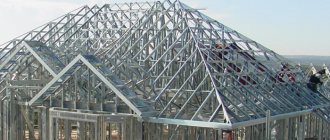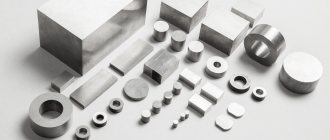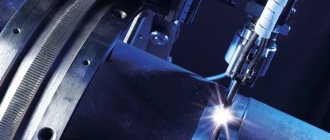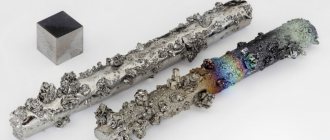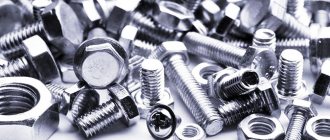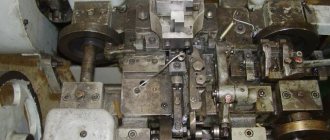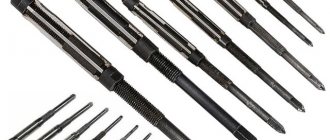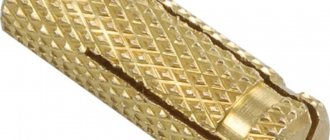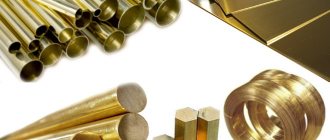Main characteristics
As the most refractory metal, tungsten has specific properties:
- The melting point of tungsten is approximately the same as the temperature of the solar corona - 3422 °C.
- At the same time, the density of pure tungsten puts it on par with the densest metals. Its density is almost equal to that of gold - 19.25 g/cm3.
- The thermal conductivity of tungsten depends on temperature and ranges from 0.31 cal/cm·sec·°С at 20°С to 0.26 cal/cm·sec·°С at 1300°С.
- The heat capacity is also close to gold and amounts to 0.15·103 J/(kg·K).
The metal has a body-centered cubic crystal lattice. Despite its high hardness, tungsten in a heated state is very ductile and malleable, which makes it possible to make thin wire from it, which has wide applications.
Tungsten wire
It has a silver-gray color that does not change in the open air, since tungsten has high chemical resistance, and it reacts with oxygen only at temperatures above red heat.
The chemical properties of an element usually begin to appear when heated above several hundred degrees. Under normal conditions, it does not react with most known acids, except for a mixture of hydrofluoric and nitric acids. In the presence of certain oxidizing agents, it can react with alkali melts. In this case, to start the reaction, heating to a temperature of 400 - 500 ° C is required, and then the reaction proceeds violently, with the release of heat.
Some compounds, especially tungsten carbide, have very high hardness and are used in metallurgical production for processing hard alloys.
The given characteristics of tungsten determine the specific areas of application of the metal, both in its pure form and as part of various alloys and chemical compounds. Tungsten is included in many heat-resistant alloys as an alloying additive to increase hardness, melting point and corrosion resistance. The similarity of the density and heat capacity of tungsten and gold can theoretically serve to counterfeit gold bars, but this can easily be detected by measuring electrical resistance and by remelting the gold bar.
Composition and properties
The content of the base varies depending on the brand. In industrial and commercial stores you can buy alloys with W from 75% to 97% and higher. Any tungsten alloy, regardless of its purity, contains alloying components and impurities. Commonly encountered ones include copper, iron, and nickel. It is from them that the VNM and VRP brands are formed, where the letters in the marking indicate the name of the element. In addition to this, compounds may contain chromium, molybdenum, cobalt, even silver and any other metals.
Mechanical and chemical properties determine the advantages of alloys. The advantages include:
- The density of refractory alloys reaches 16.5 g/cm3.
- Hardness reaches 20-42 HRC. Each brand has its own range of indicators.
- High tensile strength – up to 1200 MPa.
- Relative elongation depends on the conditions in which the part will be used and on the requirements that apply to this indicator. Grades of tungsten-based hard alloys are characterized by a wide range - from 1/10% to 27%!
- Good machinability despite strength and density. In our company you can order wire winding, cutting of rolled products, alloying of ingots, melting in various environments, making holes in finished parts, drawing wire of various diameters from customer-supplied raw materials.
- Work in elevated and extreme temperatures. Many brands of tungsten alloys can be seen in elements of heating and melting furnaces, protective screens, and installations for growing single crystals.
By adding certain alloying components to slav, you can achieve precise characteristics and improve various properties.
Production of tungsten
The metal does not occur in nature in its pure, native form. Most deposits are formed by oxides. The content of compounds in terms of pure metal in the ore deposit is 0.2 - 2%. Chemical resistance and high melting point allow the production of tungsten from ore only when using specific techniques.
Tungsten rods
Most methods for the industrial production of tungsten are based on the recovery of the metal from its oxide. The first stage of production consists of beneficiation of tungsten-containing ore. Leaching and reduction operations then produce WO3 oxide, which is reduced to pure metal under a hydrogen atmosphere. The process temperature is about 700 °C.
As a result of the reaction, a fine metal powder is obtained. The high melting point does not allow the metal to be formed into ingots, so tungsten powder is first pressed under high pressure and then sintered in a hydrogen environment using heating to a temperature of 1300 °C. A powerful electric current is passed through the resulting bars. As a result of the high transition resistance between the metal grains, the workpiece is heated and melted.
The resulting ingot is purified by the method of zone melting, similar to the technology for producing ultra-pure semiconductors. The production of tungsten using this technology makes it possible to obtain metal of a high degree of purity without additional cleaning operations.
In the production of alloys, all components are added before the powder pressing stage, since this is no longer possible to do later. During the process of pressing, sintering and further processing of the workpiece (pressing, rolling), a uniform distribution of impurities in the alloy is ensured.
Tungsten
Tungsten is processed at temperatures of about one and a half thousand degrees. With this heating, the metal becomes very plastic and allows forging and stamping. Thin wire for spirals of incandescent lamps is made by drawing. In this case, metal crystals are located along the wire, increasing its strength. Since high homogeneity requirements are imposed on lamp spirals, the tungsten wire is additionally subjected to electrochemical polishing operations.
Metal characteristics
The special density of the metal gives it unusual characteristics. It has a rather low evaporation rate and a high boiling point. In terms of electrical conductivity, the substance has low values, unlike copper, three times at once. It is the high density of tungsten that limits its areas of application. In addition to all this, the use of the substance is greatly influenced by its increased fragility at low temperatures and instability to oxidation by atmospheric oxygen when exposed to low temperatures.
In terms of external features, the substance has strong similarities with steel. It is used for the active production of various alloys that are characterized by high strength. The tungsten processing process occurs only during exposure to elevated temperatures .
19,300 is the density of tungsten kg/m3 under normal conditions of use. The metal is capable of creating a volume-concentric cubic lattice. It has a good heat capacity. High melting temperature, which reaches 3380 degrees Celsius. Its mechanical properties are particularly influenced by its pre-treatment. If we take into account that the density of tungsten is 20 c 19.3 g/cm3, then it can easily be brought to the state of a single crystal fiber. This property should be used when producing special wire from it . At room temperature, the metal has an insignificant ductility index.
Applications of tungsten
Most applications of tungsten take advantage of its high melting point, density and ductility. Tungsten is indispensable in the following areas:
- Pure tungsten is the only metal that is used in incandescent filaments of lighting lamps, radio tubes, picture tubes and other electric vacuum devices;
- In its pure form and as part of alloys, it is used in the production of cores for sub-caliber armor-piercing projectiles and bullets;
- The high density of tungsten makes it possible to manufacture rotors for small-sized gyroscopes in rocketry and spacecraft;
- Production of non-consumable electrodes for argon-arc welding;
- Tungsten radiation protection devices are more effective than traditional lead ones. The use of tungsten is economical, despite its higher cost than lead. This is due to the fact that tungsten consumption, while the technical characteristics of the product are identical, is much less.
- Tungsten products do not require corrosion protection due to their low chemical reactivity under normal temperature conditions.
Tungsten drills
Compounds of tungsten with carbon are better known as "wins". Their high hardness is used in cutting brazes of metalworking tools - cutters, drills, milling cutters. Tools with pobedite tips are used to process almost any material, from wood, where they require almost no periodic sharpening, to any type of stone. To sharpen pobedite tools, abrasives with the highest hardness are required. Diamond and CBN abrasives, which have the highest hardness among all known, fully correspond to this.
Pobedite soldering tips are attached to the working edges of the tool using copper soldering. Borax is used as a flux.
Tungsten carbide is used in jewelry, particularly rings. The high hardness of the material allows you to maintain the shine of the product throughout its entire service life.
Pobedit is made using the powder method, using cobalt for bonding with a tungsten carbide crystal.
Production and use of tungsten carbide alloys
To obtain tungsten alloys, only powder metallurgy methods are applicable. In this case, the powder is sintered at high temperatures in special furnaces and a certain created environment. Next, pieces, ingots, and bars are formed under the press, depending on the requirements for the finished product and the stages of the technological process.
To choose the most suitable option, it is important to familiarize yourself with the types of tungsten-based alloys:
- Rhenium-tungsten. Has higher ductility after heat treatment than pure metal. At high temperatures, it is rhenium that adds strength to the alloy, allowing it to work in extreme temperatures. In industry, thermocouples are made from the alloy to measure temperature. metals in a carbon environment.
- Tungsten-molybdenum. The MV-Mp brand is used to produce hot-rolled sheets and products for high-temperature furnaces. MV-2-MP – processed or extruded blanks, crucibles. MV10-MP is a brand that is in demand in the manufacture of sputtering targets. Tungsten-molybdenum alloys are ideal for the manufacture of parts for high-temperature furnaces and heat exchangers, and installations for annealing uranium fuel.
- Tungsten-iron-nickel. VNZh alloys, despite the W content from 80% to 97%, have a high absorption coefficient of gamma radiation, surpassing lead. Therefore, protective containers and shipping cases for storing and transporting radioactive substances are often made from heavy alloys (VNZH-97.5, VNZH-95, VNZH 7-3). Alloys with the addition of nickel and iron are used to make projectile cores, balance beams, and centrifuge parts.
- A copper-tungsten alloy may consist of two chemical elements or also contain nickel. The most common brands in Russia are VNM 3-2, VNM 5-3, VNM 2-1, VD-30, VD-25, VD-20. Used in continuous monitoring equipment, protective screens, collimators. Alloys are used to create electrical contacts and parts of projectiles in the defense industry.
Manufacturing of alloys and custom parts
New Technologies LLC is not only engaged in the production of rolled and stamped products from heavy refractory alloys. We can order the production of parts according to individual drawings. We also offer the acceptance of scrap tungsten alloys on especially favorable terms. When ordering additional services, we perform laser cutting, winding, stamping of any products - ours or third-party production. Need a part but don't have a drawing? Contact our specialists for help - we will develop drawings and produce unique products specifically for your enterprise!
Tungsten Products
The industry produces a wide variety of tungsten products. The most common are tungsten electrodes , tungsten wire , tungsten powder, rod, sheet. Tungsten electrodes are non-consumable and are used for welding non-ferrous metals, high-alloy steels, and materials of different chemical compositions. They provide high weld strength. Heaters and coils for incandescent lamps are made from tungsten wire Tungsten rhenium wire (thermoelectrode wire) is used for the manufacture of thermocouples, which can be used to measure high temperatures. Tungsten powder is the basis of many heat-resistant steels and alloys and hard alloys. For example, this powder is the basis of the solid tungsten-cobalt alloy VK8.
History of the discovery of tungsten
Tungsten was discovered by the famous Swedish chemist Carl Scheele. A pharmacist by profession, Scheele conducted many remarkable studies in his small laboratory. He discovered oxygen, chlorine, barium, and manganese. Shortly before his death, in 1781, Scheele - by this time already a member of the Stockholm Academy of Sciences - discovered that the mineral tungsten (later called scheelite) was a salt of a then unknown acid. Two years later, the Spanish chemists d'Eluyar brothers, working under the leadership of Scheele, were able to isolate a new element from this mineral - tungsten , which was destined to revolutionize the industry. However, this happened a whole century later.
Physical properties of tungsten
| Property | Meaning |
| Atomic number | 74 |
| Atomic mass, a.u.m | 183,84 |
| Atomic diameter, pm | 282 |
| Density, g/cm³ | 19,3 |
| Molar heat capacity, J/(K mol) | 24,27 |
| Thermal conductivity, W/(m K) | 173 |
| Melting point, °C | 3422 |
| Boiling point, °C | 5900 |
| Heat of fusion, kJ/mol | 35 |
| Heat of evaporation, kJ/mol | 824 |
| Molar volume, cm³/mol | 9,53 |
| Hardness, HB | 350 |
| Spark color | Short yellow intermittent beam of sparks |
| Group of metals | Refractory metal |
